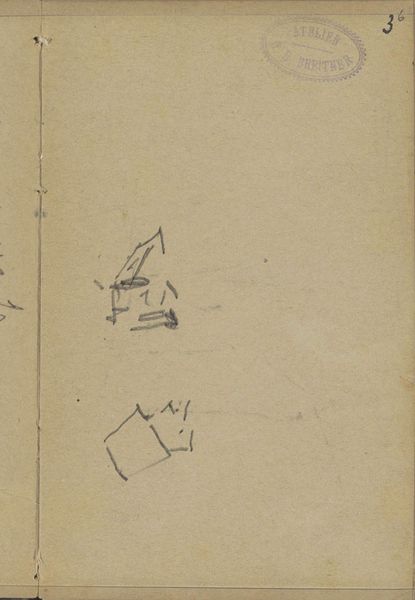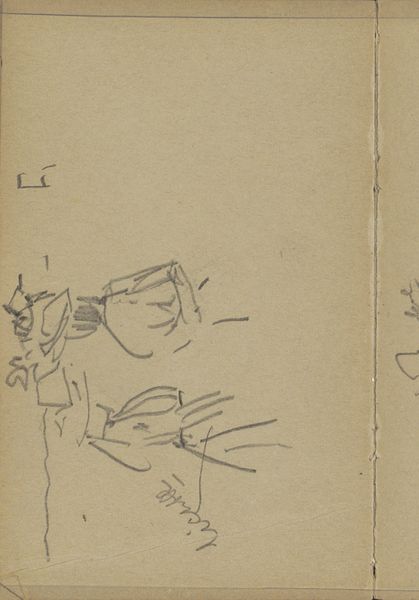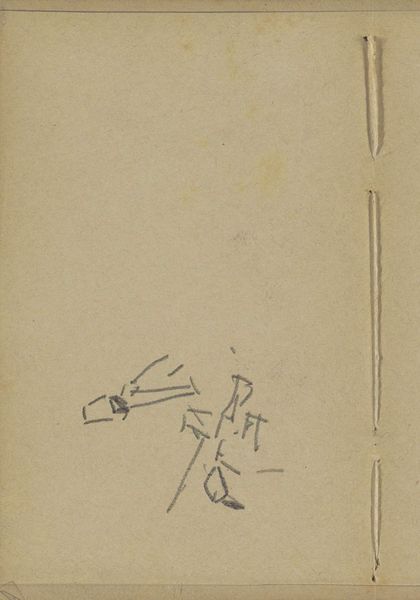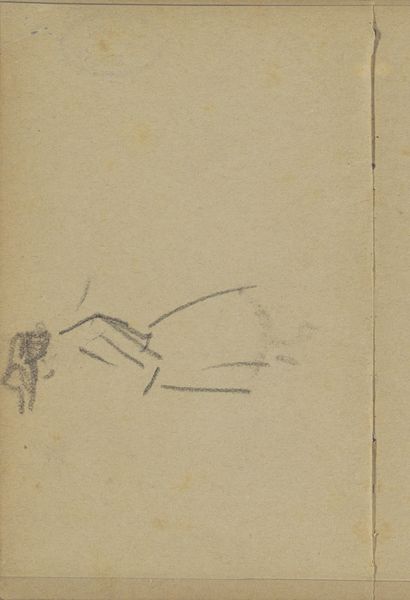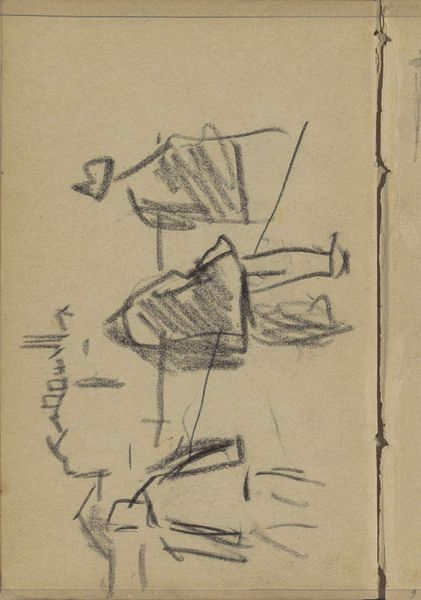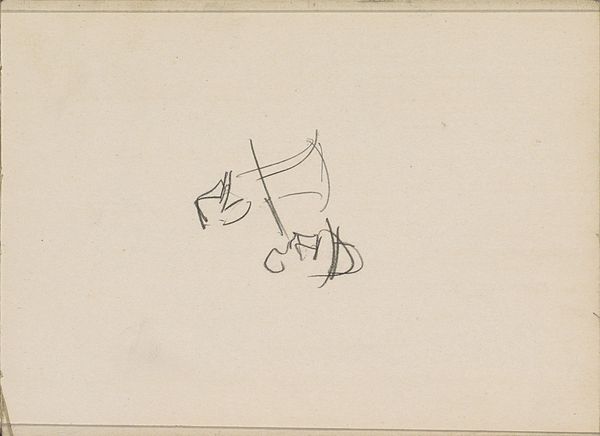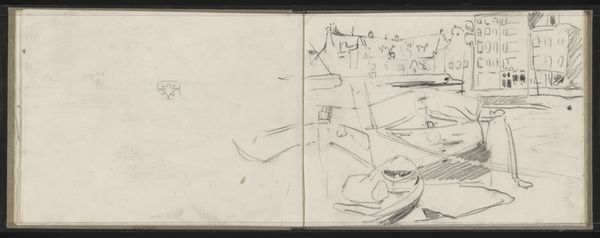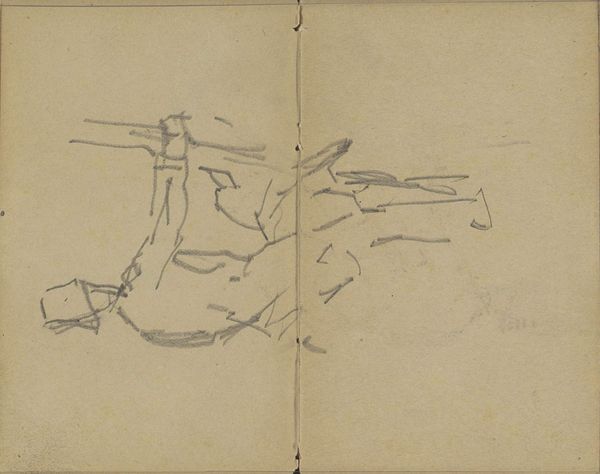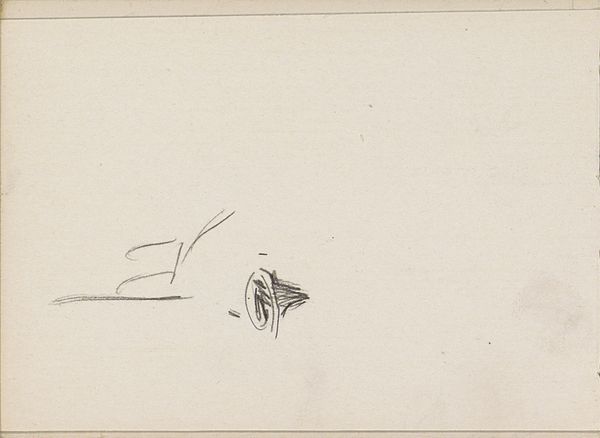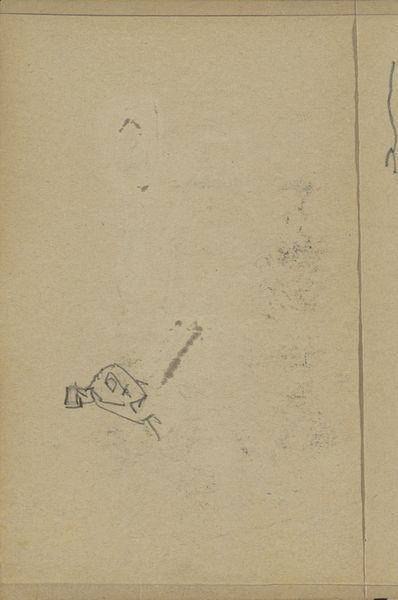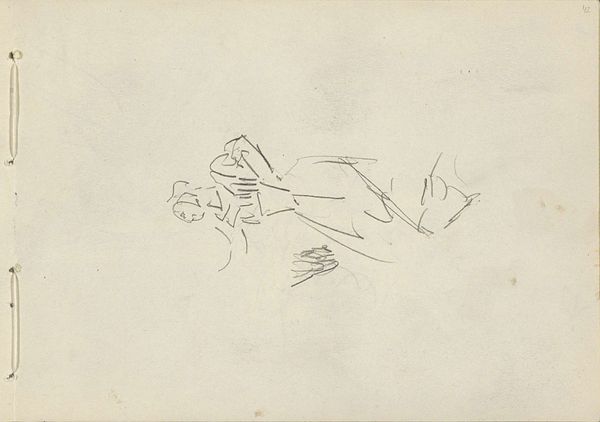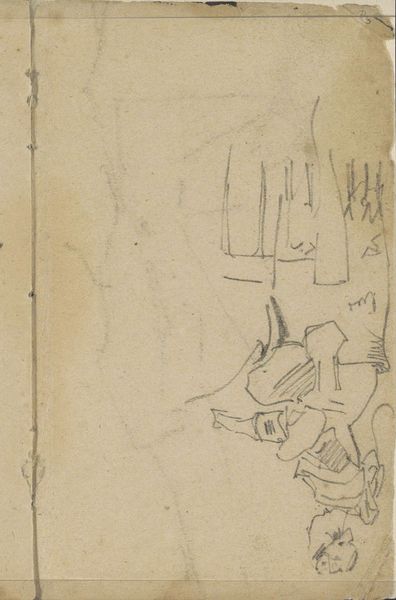
drawing, pencil
#
portrait
#
drawing
#
impressionism
#
sketch book
#
hand drawn type
#
personal sketchbook
#
idea generation sketch
#
sketchwork
#
ink drawing experimentation
#
sketch
#
pen-ink sketch
#
pencil
#
sketchbook drawing
#
storyboard and sketchbook work
#
sketchbook art
Copyright: Rijks Museum: Open Domain
Curator: Welcome. We’re standing before George Hendrik Breitner's "Vrouw met hoed," created between 1887 and 1891. It’s a pencil drawing, currently held in the Rijksmuseum's collection. Editor: The immediacy is striking. You get a real sense of transience and it is a fleeting moment being captured, almost voyeuristic in its raw candidness. Curator: Absolutely. Given Breitner’s interest in capturing everyday life, particularly the bustling city scenes of Amsterdam, and this being from his sketchbook, do you think it’s less about ‘high art’ and more about his work as a visual chronicler? The material constraints of working en plein air, the cheap sketchbook and readily available pencils-- that impacts how women are represented in art history, no? Editor: Exactly! It raises important questions about labor and class dynamics during that period. Was she a model or a passerby? The quick strokes feel less about idealizing the female form and more about documenting a social encounter. And those details that look almost unfinished – are they deliberate omissions signaling Breitner’s attitude to the upper class or the process he went through to create images? Curator: Considering the period and the evolving role of women, do you find this sketch challenging conventional portraiture, with all its implicit power structures? Editor: It’s interesting because it feels less like a formal portrait and more like a study of character. There’s agency in that very sketchiness— a challenge to the traditional male gaze, as Breitner is not capturing her with a perfect finish, but making observations and representing the society he observed with precision. What type of woman did wear these hats during the 1880s? Curator: Well, high society, mainly... It would have been expensive for lower social classes to keep up with trends, no? And what about Breitner using photography? How does photography play in here as an inexpensive means to sketch urban landscape or even quick portraits? Editor: Yes. Overall, what seems striking is the artwork’s casualness when considering the socio-political status and the impact on working classes! I agree, photography helps capturing models easier at that time, making portraits affordable. Curator: Food for thought. Perhaps we’ve started to disentangle some of the social layers captured in this quick drawing. Editor: Indeed. It goes to show how even the simplest of sketches can speak volumes about power, observation, and the human condition, and Breitner as a pioneer observer!
Comments
No comments
Be the first to comment and join the conversation on the ultimate creative platform.
